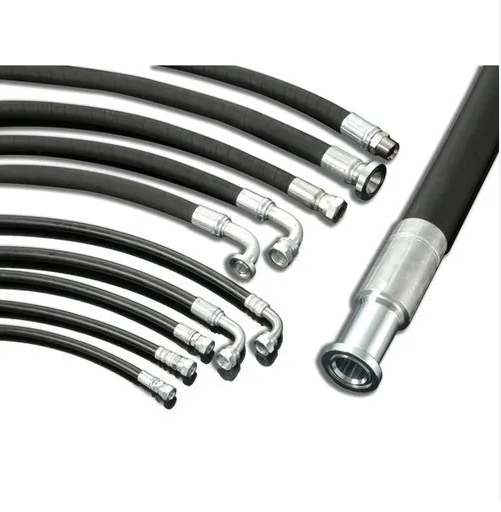Table of Contents
Hose pipe Working in boiler
Hose pipes are used in boilers to transport water, steam, or other fluids from one location to another. They are typically made of flexible materials, such as rubber or plastic, and are designed to withstand high pressure and temperature.
In a Steam boiler, hose pipes are used to:
- Connect the Industrial boiler to the water supply
- Connect the Industrial steam boiler to the heating system
- Connect the boiler to the steam distribution system
- Transport water or steam to and from the boiler
Hose pipes are an essential part of any boiler system. They allow the boiler to operate efficiently and safely.
Here are some of the specific ways that hose pipes are used in boilers:
- Water supply hose: The water supply hose connects the boiler to the water supply. This allows the boiler to be filled with water before it is turned on.
- Heating system hose: The heating system hose connects the boiler to the heating system. This allows the hot water or steam from the boiler to be distributed to the radiators or other heat emitters in the home.
- Steam distribution hose: The steam distribution hose connects the boiler to the steam distribution system. This allows the steam from the boiler to be distributed to the appliances that need steam, such as steam boilers or steam engines.
- Auxiliary hose: Auxiliary hoses are used to connect the boiler to other equipment, such as pumps or valves.
Hose pipes are an important part of any boiler system. They allow the boiler to operate efficiently and safely. It is important to inspect hose pipes regularly for leaks or damage, and to replace them as needed.
Here are some tips for inspecting and maintaining hose pipes in boilers:
- Inspect hose pipes visually for any leaks or damage.
- Use a pressure tester to check the pressure rating of the hose pipe.
- Replace any hose pipes that are leaking or damaged.
- Inspect hose pipes at least once a year.
- Replace hose pipes every 5 years, or sooner if they are damaged.
A hose is a flexible hollow tube designed to carry fluids from one location to another. Hose is a flexible pipe.
A hose is a flexible hollow tube designed to carry fluids from one location to another. With their diverse applications and materials, hoses have become an essential component in numerous sectors. In this comprehensive guide, we will explore the different types of hoses, their uses, and their significance in various industries.

Understanding Hoses
A hose is a flexible tube that enables the transfer of fluids, such as water, chemicals, oil, or gas, from one location to another. Unlike rigid pipes, hoses offer flexibility, allowing for easy maneuverability and adaptability in various environments. They are typically cylindrical in shape, featuring a circular cross-section.
The design of a hose depends on the specific application and the desired performance characteristics. Factors such as size, pressure rating, weight, length, and chemical compatibility are taken into consideration during the hose manufacturing process. Various materials, including nylon, polyurethane, polyethylene, PVC, synthetic or natural rubbers, PTFE (Teflon), stainless steel, and other metals, are used to create hoses with different properties and capabilities [1].
Types of Hoses and Their Applications
Chemical Transfer Hoses
Chemical transfer hoses are specifically designed to handle the transfer of industrial chemicals. They are commonly used in applications that involve pressure, gravity flow, and suction services. Due to the potentially hazardous nature of the chemicals being transported, these hoses are manufactured to withstand the pressures and conditions associated with chemical handling [3].
Petroleum Transfer Hoses
Petroleum transfer hoses are crucial for industries that deal with oil, gas, and petroleum-based solvents. These heavy-duty hoses are employed in agriculture, shipbuilding, quarries, mines, railroads, factories, and construction. They can handle high temperatures and are suitable for both suction and discharge services. Generally made of synthetic rubber, these hoses possess medium to high oil resistance, ensuring safe and efficient petroleum transfer [3].
Steam Hoses
Steam hoses serve a wide range of purposes, including steam cleaning, pressure washing, heat control, fire prevention, pumping, and more. They find applications in various industries such as chemical plants, refineries, and manufacturing facilities. These hoses are typically made of synthetic rubber and reinforced with steel wire for added strength and durability [3].
Food and Beverage Hoses
Food and beverage hoses are sanitary transfer hoses designed to handle the transportation of edible materials. These hoses are commonly used in the food and beverage industries, ensuring the safe and hygienic transfer of liquids, dry bulk materials, and vacuum services. Materials like Nitrile, PVC, and Neoprene are often used to manufacture these hoses, complying with international standards for food safety [3].
Abrasive Material Hoses
Abrasive material hoses are robust and durable, specially designed to handle non-oily abrasive or coarse materials. They are commonly used for the transportation of rocks, chips, slurry, mud, sand, limestone, and plastic pellets. These hoses are typically made of thick pure gum rubber, although lighter and more flexible options made of urethane are also available. Static dissipating or static conductive hoses are recommended in applications where static buildup is a concern [3].
Choosing the Right Hose
Selecting the appropriate hose for a specific application is crucial to ensure optimal performance and safety. Here are some factors to consider when choosing a hose:
- Fluid Compatibility: Determine the compatibility of the hose material with the fluids it will come into contact with during operation. Chemical resistance charts can provide valuable information in this regard.
- Temperature and Pressure Ratings: Consider the temperature and pressure conditions the hose will be exposed to, ensuring the hose can withstand the intended range.
- Size and Length: Determine the appropriate hose diameter and length based on the specific requirements of your application.
- End Connections: Ensure the hose is compatible with the necessary end connections, such as clamps, fittings, spigots, flanges, or nozzles.
- Industry Standards and Regulations: Check if the hose complies with industry-specific standards and regulations to ensure safety and quality.
By considering these factors, you can choose a hose that meets your specific needs and provides optimal performance and longevity.
Hoses are vital components in various industries, enabling the safe and efficient transfer of fluids from one location to another. Understanding the different types of hoses and their applications is crucial in selecting the right hose for specific tasks. Chemical transfer hoses, petroleum transfer hoses, steam hoses, food and beverage hoses, and abrasive material hoses each serve unique purposes and come with their own set of properties.
Hose Pipe FAQ
A boiler hose is a flexible pipe used to connect a Steam boiler to other components, such as a water tank or a heat exchanger. Boiler hoses are typically made of rubber or a synthetic material that can withstand high temperatures and pressures.
There are two main types of boiler hoses: steam hoses and water hoses. Steam hoses are designed to withstand high temperatures and pressures, while water hoses are designed for lower temperatures and pressures.
Boiler hoses come in a variety of sizes, measured in inches. The size of the hose you need will depend on the size of the components you are connecting.
Boiler hoses are typically made of rubber or a synthetic material such as neoprene. Rubber hoses are more affordable, but they are not as durable as synthetic hoses. Synthetic hoses are more expensive, but they are more resistant to heat, chemicals, and abrasion.
When choosing a boiler hose, you need to consider the following factors:* The type of fluid that will be flowing through the hose * The temperature and pressure of the fluid * The size of the hose * The material that the hose is made of
To install a boiler hose, you will need the following tools:* A wrench * A pipe clamp* A sealant
To maintain a boiler hose, you should inspect it regularly for leaks or wear. If you find any leaks, you should replace the hose immediately. You should also clean the hose regularly to remove any dirt or debris that could build up and cause a blockage.
The frequency with which you need to replace a boiler hose will depend on the type of hose and the conditions in which it is used. In general, you should replace a boiler hose every 3 to 5 years.
Boiler hoses can be dangerous if they are not properly installed or maintained. Here are some safety considerations to keep in mind:* Never use a boiler hose that is damaged or leaking.* Always disconnect the boiler hose before working on the boiler. * Use the correct type of hose for the application. * Install the hose properly and securely. * Inspect the hose regularly for leaks or wear.
Boiler hoses are available at most hardware stores and online retailers. When buying a boiler hose, be sure to choose a reputable brand and make sure that the hose is rated for the pressure and temperature of the fluid that will be flowing through it.
I hope this answers your questions about boiler hoses
Buy Boiler Spare Parts at the Best Price
Thermodyne Boilers supplies 100+ Industrial Boiler Parts all over India. Contact our sales team & send your requirement to get prices & discounts
